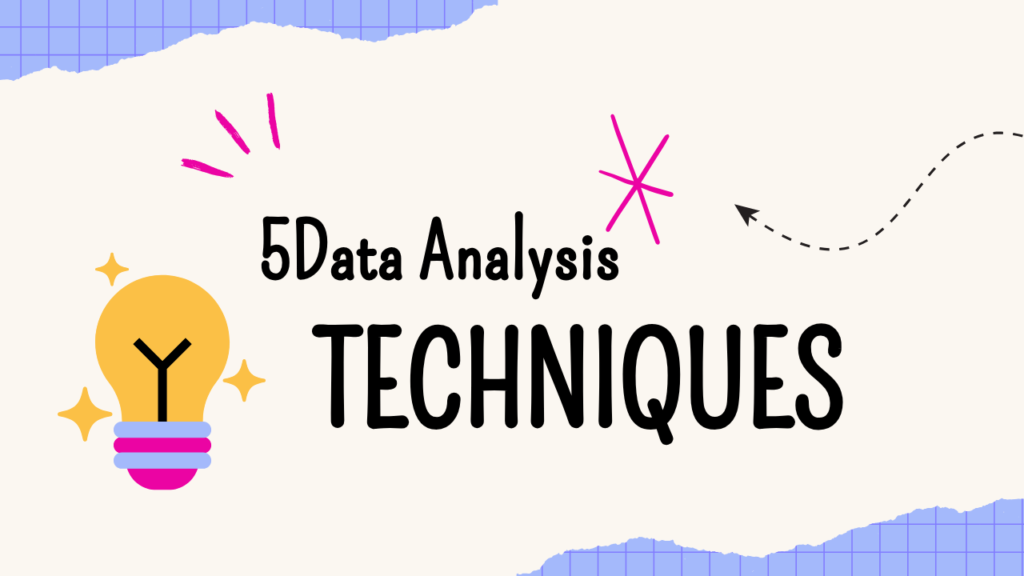Data is everywhere. But making sense of it? That’s where the magic happens.
Whether you’re a seasoned data pro or an aspiring analyst, mastering the right techniques can set you apart. I’ve worked with tons of datasets—some that behaved well, others that threw tantrums like a stubborn SQL query. But through it all, these five techniques have been game-changers.
Let’s break them down in a way that’s simple, practical, and (hopefully) fun.
1. Regression Analysis – The Backbone of Predictions
Imagine you’re working with sales data, and your boss asks, “Can we predict revenue based on ad spend?” That’s where regression steps in.
Regression helps you identify relationships between variables—like how temperature affects ice cream sales (or how coffee intake affects productivity… okay, maybe that one’s just me).
Use case: Sales forecasting, risk assessment, customer behavior analysis.
🔹 Tip: If your data has multiple influencing factors, go for multiple regression instead of linear regression.
2. Clustering – Because Not All Customers Are the Same
Think of clustering as organizing a messy room. Instead of one big pile of “stuff,” you group similar items together.
For example, an e-commerce platform can use clustering to segment customers based on shopping behavior. High spenders? Discount seekers? Late-night impulse buyers? (Guilty.)
Use case: Customer segmentation, fraud detection, market research.
🔹 Tip: K-Means is popular, but DBSCAN works wonders when clusters aren’t clearly defined.
3. A/B Testing – The Science Behind Small Tweaks
Ever wondered why companies obsess over tiny changes—like a blue button vs. a red button? That’s A/B testing.
You split your audience into two groups, show them different versions of a webpage, ad, or email, and let data decide which one performs better. No more relying on gut feelings.
Use case: Website optimization, product features, marketing strategies.
🔹 Tip: Ensure sample sizes are statistically significant before making decisions. No premature conclusions!
4. Time-Series Forecasting – Predicting the Future (Sort Of)
Got data that changes over time? Stock prices, website traffic, or electricity consumption? Time-series forecasting is your best friend.
It helps you identify patterns, trends, and seasonality—so you can make data-driven predictions instead of wild guesses.
Use case: Demand forecasting, financial analysis, resource planning.
🔹 Tip: Use ARIMA for traditional forecasting, but if you’re dealing with complex patterns, explore LSTMs (Long Short-Term Memory networks).
5. Anomaly Detection – Catching the Odd One Out
Let’s say a bank detects a transaction for $10,000 from a customer who usually spends $50. 🚨 Red flag!
Anomaly detection helps you spot unusual patterns that could indicate fraud, system failures, or data quality issues.
Use case: Fraud prevention, cybersecurity, quality control.
🔹 Tip: Isolation Forest and One-Class SVM are great models to start with.
Final Thoughts
Data analysis isn’t just about crunching numbers—it’s about uncovering insights that drive decisions.
These five techniques will give you a solid foundation, but the real magic? It happens when you experiment, tweak, and refine your approach.
Which technique do you use the most? Or is there one you’d love to master? Let’s discuss in the comments! 🚀
